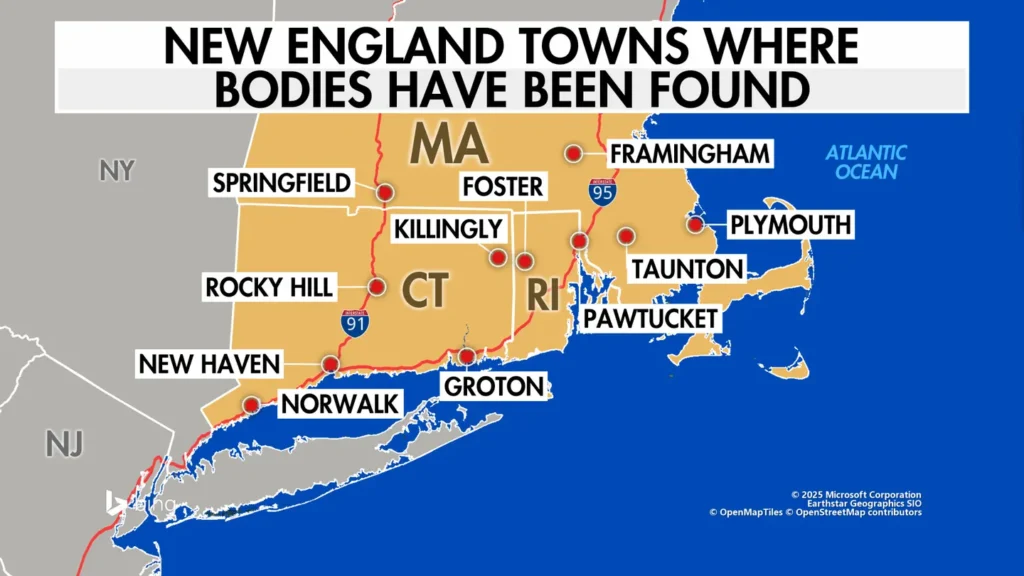Frequent Disappearances of Women in New England: How Modern Safety Tools Address the Fatal Flaws of Traditional Alarms?
Series of Disappearances Sound Safety Alarm
From March to July of this year, multiple cases of missing women were reported across six states in the New England region—Maine, New Hampshire, Vermont, Massachusetts, Rhode Island, and Connecticut—sparking widespread public concern. Particularly unsettling was the discovery of a woman’s body in the woods of Milton, Massachusetts. This series of incidents has not only plunged communities into panic but also highlighted the severe safety challenges faced by women in modern society.

The Fatal Flaws of Traditional Safety Alarms
Against the backdrop of escalating safety threats, many women have turned to personal safety alarms as a means of self-protection. However, the founder of WZU identified several critical flaws in traditional alarms during a personal encounter with violence:
Volume Reduction Issue: Holding the alarm in hand inadvertently blocks its sound outlets, significantly diminishing its effectiveness.
Risk of Being Snatched: The compact design makes it easy for attackers to grab or even deactivate the device.
Limited Functionality: Reliance solely on high-decibel sound proves ineffective in noisy or remote environments.
These flaws can lead to catastrophic consequences in real-life emergencies, prompting safety experts to rethink the design philosophy of personal protection devices.
Next-Gen Safety Solutions: The Innovative Design of WZU Smart Alarms
To address the shortcomings of traditional alarms, the modernized WZU personal safety alarm incorporates multiple innovations to deliver more reliable protection:
Dual-Mode Alert System
*125-decibel audio alarm*: Loud enough to deter most threats and repel aggressive animals.
Custom voice alerts: Pre-recorded distress messages with critical details, such as “I am at [landmark] and need [medical/police] assistance.”
Auto-playback feature: When the user cannot speak, it broadcasts: “My emergency info card is in my left pocket. I need immediate help.”
Tamper-Proof Design
Anti-reset switch: A one-piece fixed latch ensures uninterrupted alarm activation.
Detachable switch mechanism: In emergencies, the switch can be separated, preventing attackers from turning off the device.
Sound-following technology: The alarm continues emitting sound while moving with the user, aiding rescuers in tracking their location.
Acoustic Optimization
Raised back structure: Acoustically engineered to prevent sound suppression and amplify volume through reflection.
Throw-for-help feature: Can be tossed toward a safe area, emitting a clear, continuous signal to increase rescue chances.
Instinctive Activation
Emergency pull-cord design: Leverages humans’ instinctive grip reflex during crises—simply tug to trigger.
Customizable cord: Adjustable length and material for rapid response.
Beyond Tradition: A Holistic Protection Approach
The WZU flash alarm not only enhances alert capabilities but also integrates practical features:
Built-in rechargeable LED flashlight for nighttime illumination and visual distress signals.
Compact, portable design for everyday carry without drawing attention.
Suitable for diverse groups: women living alone, seniors, children, night runners, and individuals with special needs.
The New Safety Paradigm: From Personal Protection to Social Responsibility
The disappearance cases serve as a stark reminder that personal safety demands ongoing attention. While no device offers 100% protection, modern tools like WZU significantly improve users’ ability to respond to threats by addressing traditional alarms’ flaws.
More importantly, such innovations reflect a shift in safety philosophy—from passive defense to active distress signaling, and from single-function devices to integrated solutions. In today’s complex safety landscape, choosing the right tools, maintaining situational awareness, and having an emergency plan form the triple safeguard for modern women’s self-protection.

As members of society, we also share the responsibility to identify potential hazards, support vulnerable groups, and collectively build safer communities. After all, everyone’s safety is a collective duty.
